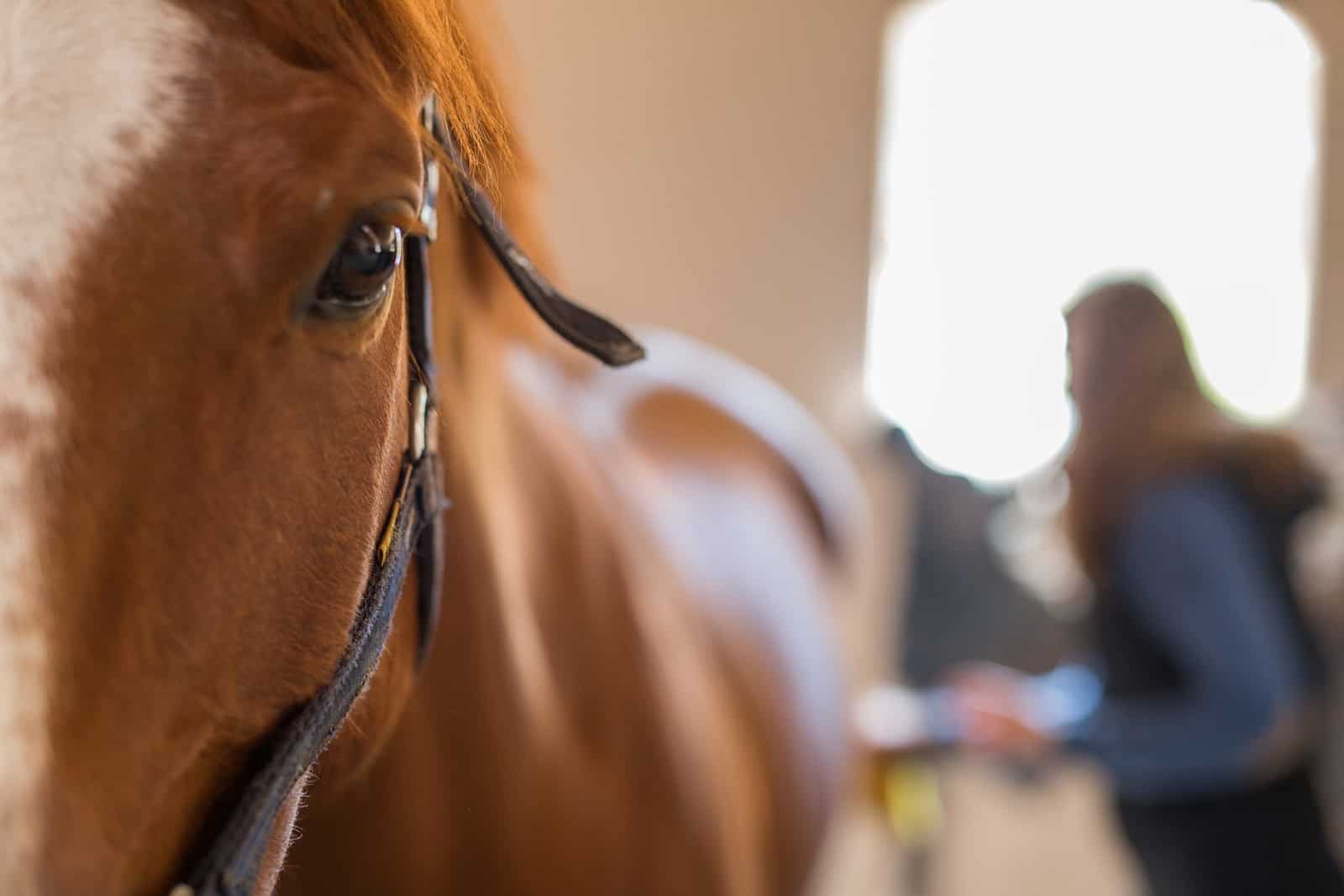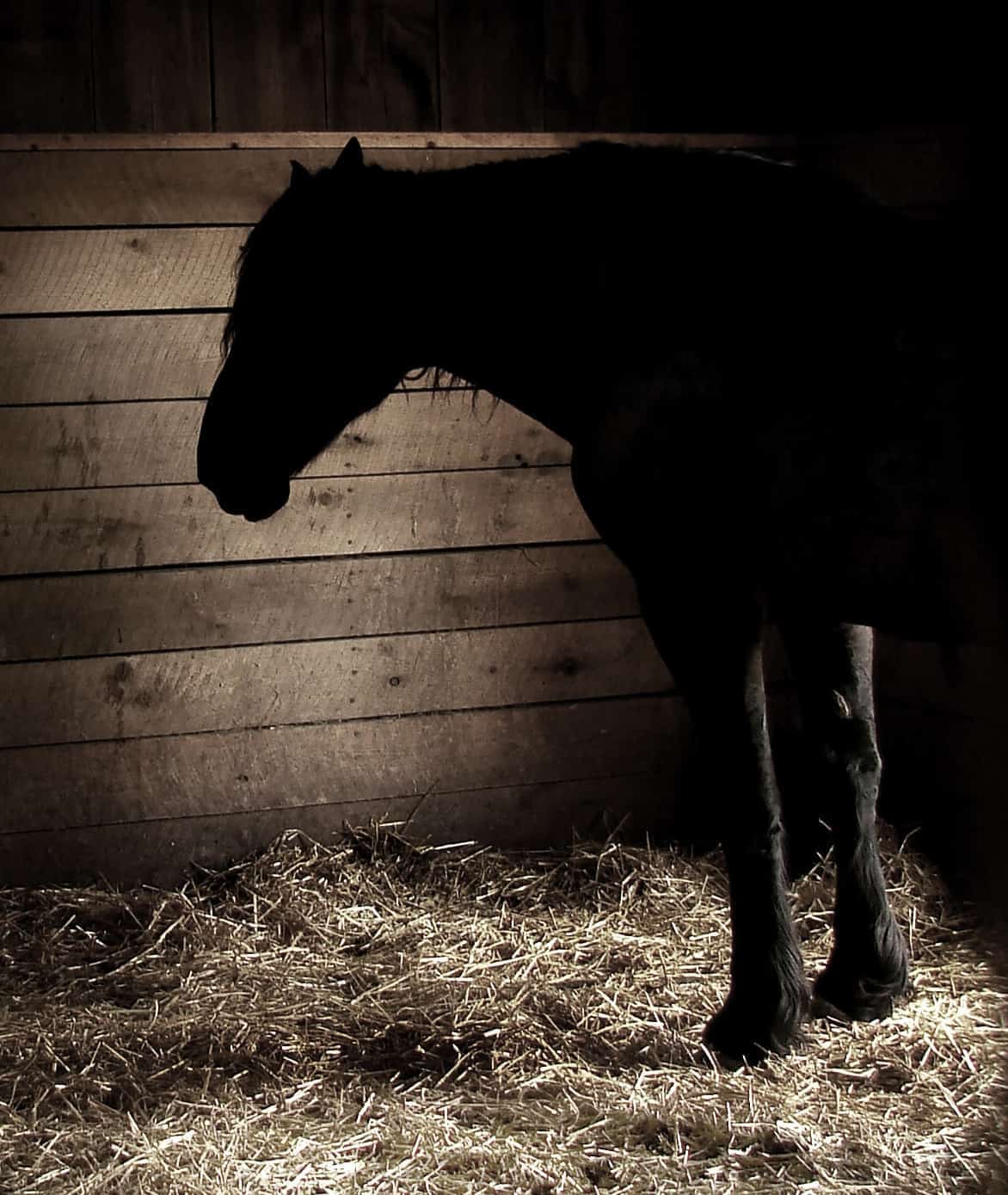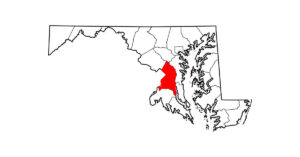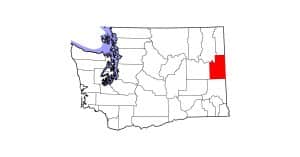Equine Body Language: 7 Signs to Recognize

7 behavioral signs that can help you tell if your horse is happy, sick, or painful, as well as keep you safe
Horse, let’s talk. How are you feeling? Oh, you like it when I scratch right there? Oh, but not here, right? Okay. Whoa, wait a minute. You’re not about to bite me, are you?
On paper, it seems like a one-sided conversation. If you happened to overhear this discussion across the stall wall, you might think your neighbor’s having an imaginary sit-down with her horse. But the truth is, horses do communicate with humans. In fact, when given the chance, they do it quite well. And they do it all through body language—the use of their faces, ears, legs, backs, tails, and entire bodies to communicate information.
So this is not a one-sided or imaginary conversation. And your fellow barnmate isn’t nuts. On the contrary, when humans make an effort to learn to read their horses, they can create pathways toward a stronger and safer interspecies relationship.
Your Horse’s Native Tongue
While vocal communication between horses has its place in herds, we know most of their daily communication occurs via body language. It’s through seemingly subtle movements—of the ears, the nostrils, the eyes, the mouth, the tail, the feet, or even just shifting weight or tensing up—that they convey information to each other.
“This is just how they’ve evolved, and it’s how their body language has evolved, as well,” says Sue M. McDonnell, PhD, certified applied animal behaviorist and founding head of the equine behavior program at the University of Pennsylvania School of Veterinary Medicine’s New Bolton Center, in Kennett Square.
And it makes sense, she says. These are prey animals, and subtle communication can mean survival in a world where any kind of noise could draw attention from predators. If we can tap into that “horse language code,” we can find a plethora of useful information.
Language Lessons: Breaking the Code
If a horse swishes his tail, is he agitated or happy? If he half-closes his eyes, is he squinting in pain or relaxing?
To understand equine body language, first we have to be aware that there’s communication to start with—which isn’t always a given. “It’s surprising to see how some people, regardless of their background with horses, don’t notice that body language is happening at all, while others seem to pick up on it intuitively,” says McDonnell.
Second, we have to read the cues without projecting or, worse, guessing. Good “listening” comes from knowing the science behind equine body language, says Rachele Malavasi, PhD, of the School of Ethical Equitation, in Moncigoli Di Fivizzano, Italy. It also comes from spending lots of time simply watching your horse. “I recommend that every horse person observe horses,” she says. “Spend some time doing nothing but observing your horse in the field. Horse people need to know how horses communicate and especially how their own horses communicate.”
While each horse is different, with our sources’ help we’ve come up with common things your horse might be communicating to you through body language. It doesn’t matter if some of these aren’t intentional communication. Even if the horse isn’t making an effort to “talk” to you, he’s still sending critical information that you need to be able to read.
Here are seven things your horse might be telling you:

1. “I’m not feeling well.”
A horse that’s ill or in pain might display classic physical expressions of discomfort. “A sick horse probably wouldn’t be very bright or alert,” says McDonnell. “He might stand off from the group as if he doesn’t want to interact with anyone. That body language is often the first sign that something is off, even before he loses his appetite.”
If he’s in pain, he might show guarding, meaning he’s protecting the painful area, she says. A horse in discomfort due to colic often kicks or bites at his abdomen, paws, and lies down and stands back up. If he’s got back pain, he could be “girthy,” showing aggression when you are saddling him. And in general, a horse in pain might seem grumpy or show defense behaviors toward humans or other horses.
A horse in pain might also reduce his activity level, carry his head below the withers, display a fixed stare and rigid stance, and be reluctant to move, says Emanuela Dalla Costa, DVM, PhD, Dipl. ECAWBM, of the Department of Veterinary Medicine at the Università degli Studi di Milano, in Milan, Italy.
Facial features can also reveal pain, she says. She and her team recently developed the Horse Grimace Scale, which allows people to check for pain-related facial expressions. In the laminitic or recently castrated horses they used in their studies, they noted a tendency for most horses in pain to flatten their ears and tense or strain parts of their face: the muscles over the eye orbits, above the eyes, and mouth, the nostrils, and chewing muscles.
Ridden horses express pain using a different set of behaviors and facial expressions, says Sue Dyson, MA, Vet MB, PhD, DEO, FRCVS, head of Clinical Orthopaedics at the Animal Health Trust Centre for Equine Studies, in Newmarket, U.K. “These include persistently having the ears back, repetitive mouth-opening, an intense stare, alteration of head position by being above or behind the bit, head-tossing up and down or from side to side, tilting the head, and repeated tail swishing,” she says.
2. “I’m stressed!”
Horses in acute stress display fairly recognizable body language, says McDonnell. They might have forward-pointing ears, wide-open eyes, widened nostrils, a high head, a stiff stance, and a raised tail. They might blow out through their nose, and they might defecate.
Horses just coming out of stressful situations often lick and chew, as sort of an involuntary reaction, she adds. Simply put, this occurs because switching from a sympathetic nervous system response (to acute stress) to the parasympathetic nervous system response (“rest and restore”) causes the horse to go from a dry mouth to a wet one. As he begins to salivate, he licks and chews.
“This is an area of significant confusion, especially among ‘horse whisperer’ type clinicians who may not have a scientific background,” she says. “They put the horse through a stressful situation and then mistakenly interpret the horse’s body language of licking and chewing as a sign of submission or special bonding. But it’s not. It’s a sign of a horse being released from a higher to a lower level of acute alert, alarm, or stress.”
Body language indicating chronic stress can be more difficult to distinguish, especially from that of a sick horse or a horse in pain, says McDonnell. “This is where the grimace scale can get a bit confusing,” McDonnell says. “It’s good to look at all the body language as a whole and not just focus on the facial features alone, as these can be similar for pain, illness, and chronic psychological or physical stress.”

3. “I’m Depressed”
Depressed horses tend to exhibit a specific kind of body language that’s easy to recognize once you know it, says Clémence Lesimple, PhD, of the EthoS Laboratory of Human and Animal Ethology at the University of Rennes, in France.
“They take on a sort of ‘fixed’ posture, standing still for several minutes in a characteristic pose with their weight shifted to the front, the neck horizontal and low but stretched out, and especially their eyes open and ears unmoving,” she says. “They often stand facing the wall, and they seem to show complete indifference to their environment, like they’ve just cut themselves off.”
This scenario occurs mainly in stabled horses that have entered a state of learned helplessness, says Lesimple, meaning they’ve “given up,” so to speak, after long periods of chronic stress.
4. “I don’t like this.”
Horses don’t always agree with our choices, and they often don’t hesitate to express their discontent. If our riding style or grooming method makes them uncomfortable, their body language can be quite clear: “I don’t like that!”

“Many ridden horses will swish their tails in reaction to an undesirable leg cue,” says Janne Winther Christensen, PhD, of the Aarhus University Department of Animal Science, in Tjele, Denmark. “It’s the same movement they’ll do if they’re annoyed by a flying insect. It’s their way of saying, ‘This bothers me.’ ”
Horses might also shake their heads or react to undesirable bit pressure by gaping their mouths or yanking on the bit, sometimes pulling the rein out of the riders’ hands, she adds.
“That’s a case in which the body language then gets reinforced and becomes a learned behavior because it gets the result they want: a release of pressure,” she says.
Horses being groomed also tend to use clear body language to express what they don’t like, says Léa Lansade, PhD, of the French Horse and Riding Institute and the National Institute for Agricultural Research’s behavior science department, in Tours. “They’ll purse their lips, raise their necks, and open their eyes wide in response to a particular brushing style, for example,” she says. “They’re saying they don’t like this. And that’s really important to understand, considering the fact that grooming is supposed to be a pleasant moment for the horse. Tragically, many people think it is, even when their horse is telling them it isn’t.”
Don’t Call Me Mareish
Mares in estrus use a particular body language toward select stallions, showing their interest by following them around, urinating in front of them, and “winking” the vulva. But far too often mares get a reputation of being “marish” because of unpleasant behavior with humans, says Sue M. McDonnell, PhD, certified applied animal behaviorist and founding head of the equine behavior program at the University of Pennsylvania School of Veterinary Medicine’s New Bolton Center, in Kennett Square.
“Our behavior lab gets a lot of cases of ‘problem mares,’ where the issues are attributed to her hormones, but that’s almost never the actual problem,” she says. “Most of the time, she’s got some sort of underlying pain that’s just getting overlooked because people assume it’s because of her cycles. And that becomes a serious welfare issue.”
Mares can have adhesions or lipomas (fatty tumors) pulling on the reproductive organs, which can become even more painful during certain phases of the reproductive cycle, McDonnell says. She’s seen mares with anal tears, anovaginal fistula (an abnormal opening connecting the vagina to the rectum), and genetic sex disorders, to name a few.
“The bottom line is, don’t ignore your mare’s body language just because she’s a mare,” McDonnell says. “Chances are she’s got a real issue that needs your attention, and she’s giving you all the right signs that should never just be chalked up to her hormones.”
—Christa Lesté-Lasserre, MA
5. “It’s about to get ugly.”
Humans could prevent many equine-related accidents by paying attention to their horses’ body language, says Jan Ladewig, DVM, PhD, professor in Animal Welfare and Ethology in Copenhagen University’s Department of Large Animal Sciences, in Denmark. “Imagine you’re leading your horse down a path he doesn’t want to take,” he says. “If you notice him turning his head the wrong way, you can correct the problem right away, avoiding the danger of him dragging you off or kicking you. But if you wait till he’s turned his shoulder, it’s already too late.”
Lansade agrees, citing that about 25% of equestrian-related hospital visits result from accidents on the ground (Wolyncewicz et al., 2018). “Horses often threaten before striking—it’s part of their body language between each other,” she says. “If humans would pay attention to the laid-back ears and the threats, like pulling up a back foot or lunging toward the person with open teeth, there could be a lot fewer accidents.”
6. “I love this!”
Much equine research has focused on the communication of negative emotions. It’s time to give thought to what constitutes the expression of positive emotions in horses, says Lansade. And that, she says, we can see in their “smiles.”
“Horses have relatively complex facial muscles that allow them to have a wide variety of facial expressions, almost what we’d see in most primates,” Lansade says. “As scientists, we can’t really use the words ‘smile’ or ‘happy’ referring to animals, but when you look at the facial expression of a horse with positive emotions, that’s essentially what we’re seeing.”
Happy horses create the “equine smile” by half-closing their eyes, stretching out their upper lips, and pointing their ears backward, almost in line with the nose, she says, based on a new study her team just released about desirable grooming techniques. Sometimes they keep the upper lip still; sometimes they twitch it a bit. In combination with that smile, they usually lift or tilt their necks slightly.
“It’s not enough to avoid negative emotions in our horses; we need to be actively seeking signs of positive emotions, as well,” Lansade says. “If we can read their body language, we can recognize what makes them happy.”
7. “I need some help.”
While most of the body language we’ve described so far might be expressed without any effort to actually “communicate,” horses do communicate with us intentionally. “They clearly try to talk to us, especially if they want something from us,” says Malavasi.
In fact, if they don’t succeed in getting their message across, they’ll keep trying, she says. Her group recently tested horses trying to “ask” for help from humans to access food in a bucket that was out of their reach. “The horses in our study demonstrated that they could be very flexible in their communicative strategies,” she says. “They nodded their heads, turned their tails, moved their heads quickly toward the reward bucket. … And they did it all only if the human was paying attention. So if your horse uses two or more of these signals together, he may be trying to communicate something to you.”
However, if you never pay attention to your horse, he might eventually give up trying to communicate with you, Malavasi says. “That’s a very sad situation, but it can be fixed,” she adds. “If you don’t know what your horse wants, be creative and test solutions. Learning your horse’s communication strategy is like trying to know a person. You’ll never stop learning, but the more you know, the more you love.”
Take-Home Message
Horses naturally rely on good communication through body language. It’s what solidifies their social networks, lets them live in peace with each other, and helps protect them from predators. If we encourage these exchanges by paying attention to our horses’ visual cues, say these sources, we can deepen our interspecies connections and have healthier, safer, and more rewarding experiences with our horses.

Written by:
Christa Lesté-Lasserre, MA
Related Articles
Stay on top of the most recent Horse Health news with












